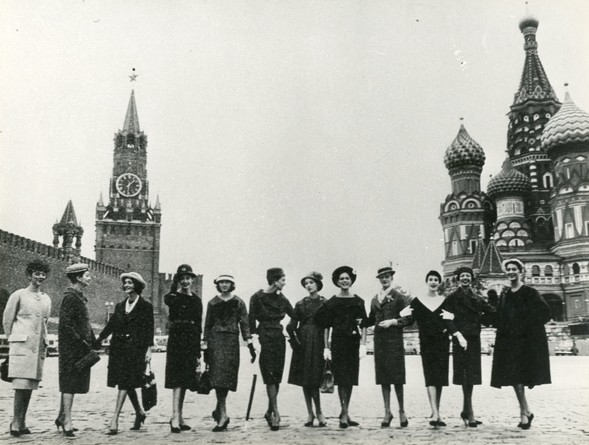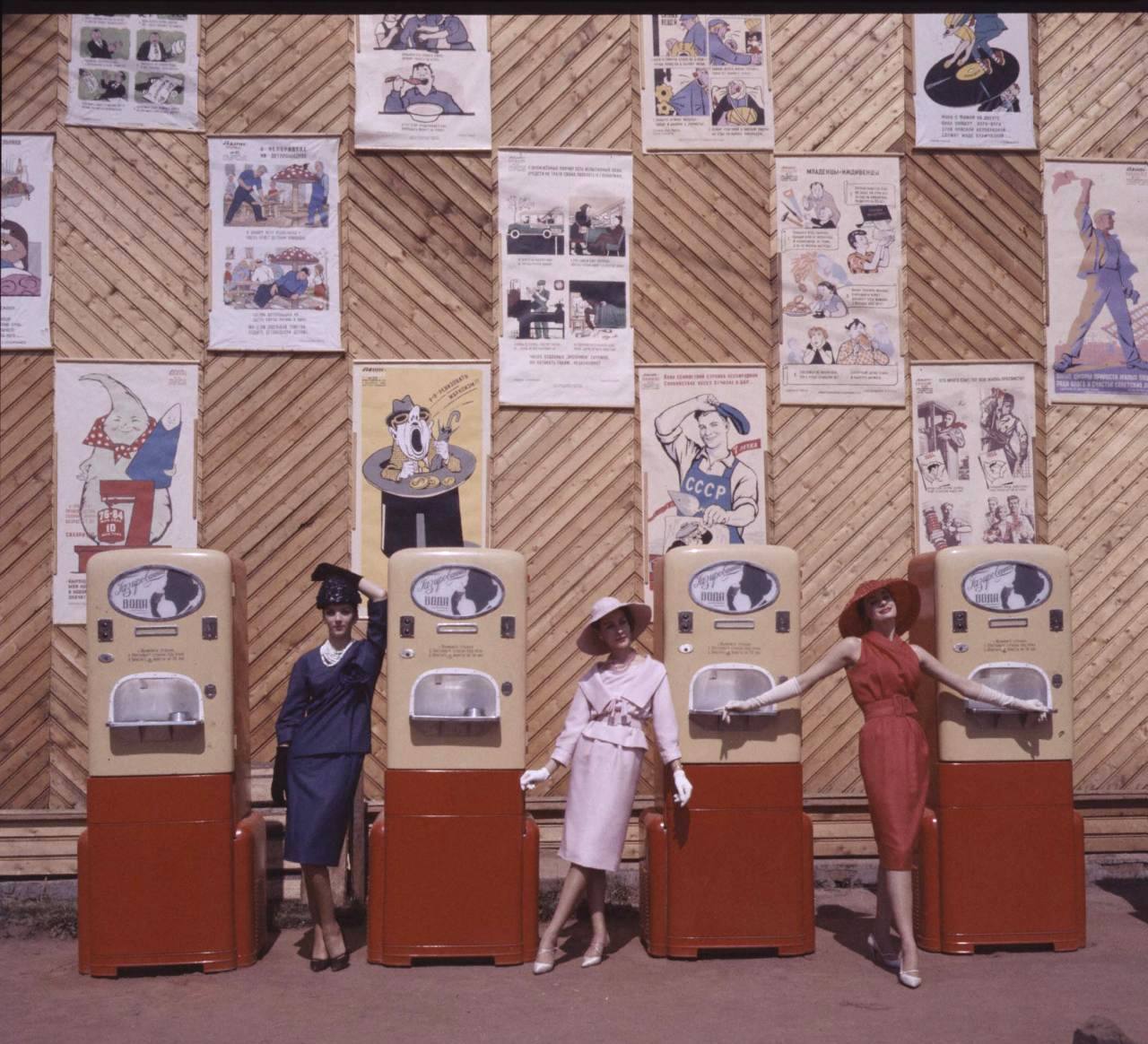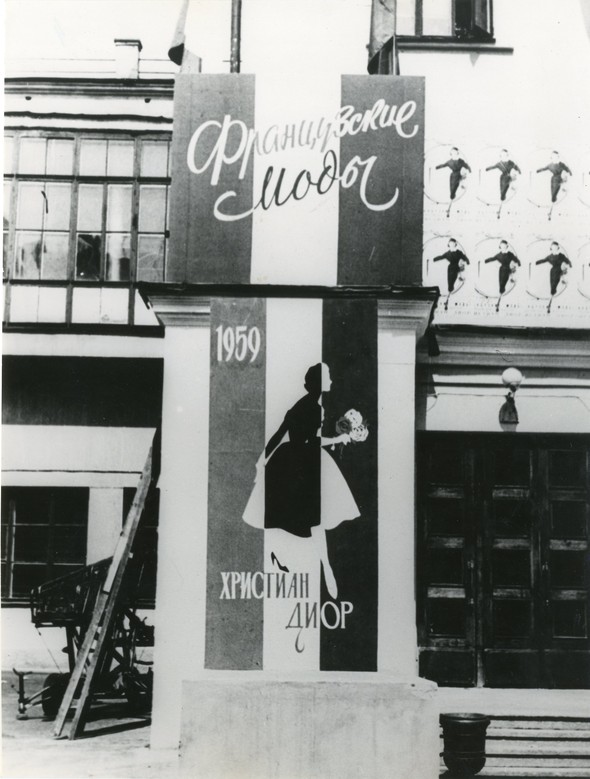The hidden meanings of Destined to be Happy exhibition - The Interview with Irina Korina
10 January 2017 | By
09 January 2017 | By
Inside the Picture: Installation Art in Three Acts - by Jane A. Sharp
19 November 2016 | By
Conversations with Andrei Monastyrski - by Sabine Hänsgen
17 November 2016 | By
Thinking Pictures | Introduction - by Jane A. Sharp
15 November 2016 | By
31 October 2016 | By
Tatlin and his objects - by James McLean
02 August 2016 | By
Housing, interior design and the Soviet woman during the Khrushchev era - by Jemimah Hudson
02 August 2016 | By
Dressing the Soviet Woman Part 3: "Are Russians Women?" Vogue on Soviet Vanity - by Waleria Dorogova
18 May 2016 | By
Dressing the Soviet Woman Part 1 - by Waleria Dorogova
13 May 2016 | By
Eisenstein's Circle: Interview With Artist Alisa Oleva
31 March 2016 | By
Mescherin and his Elektronik Orchestra - by James McLean
13 January 2016 | By
SSEES Centenary Film Festival Opening Night - A review by Georgina Saunders
27 October 2015 | By
Nijinsky's Jeux by Olivia Bašić
28 July 2015 | By
Learning the theremin by Ortino
06 July 2015 | By
Impressions of Post- Soviet Warsaw by Harriet Halsey
05 May 2015 | By
Facing the Monument: Facing the Future
11 March 2015 | By Bazarov
'Bolt' and the problem of Soviet ballet, 1931
16 February 2015 | By Ivan Sollertinsky
Some Thoughts on the Ballets Russes Abroad
16 December 2014 | By Isabel Stockholm
Last Orders for the Grand Duchy
11 December 2014 | By Bazarov
Rozanova and Malevich – Racing Towards Abstraction?
15 October 2014 | By Mollie Arbuthnot
Cold War Curios: Chasing Down Classics of Soviet Design
25 September 2014 | By
Walter Spies, Moscow 1895 – Indonesia 1942
13 August 2014 | By Bazarov
'Lenin is a Mushroom' and Other Spoofs from the Late Soviet Era
07 August 2014 | By Eugenia Ellanskaya
From Canvas to Fabric: Liubov Popova and Sonia Delaunay
29 July 2014 | By Alex Chiriac
My Communist Childhood: Growing up in Soviet Romania
21 July 2014 | By Alex Chiriac
Monumental Misconceptions: The Artist as Liberator of Forgotten Art
12 May 2014 | By Rachel Hajek
28 April 2014 | By Rachel Hajek
An Orgy Becomes a Brawl: Chagall's Illustrations for Gogol's Dead Souls
14 April 2014 | By Josephine Roulet
KINO/FILM | Stone Lithography Demonstration at the London Print Studio
08 April 2014 | By Alex Chiriac
24 March 2014 | By Renée-Claude Landry
Book review | A Mysterious Accord: 65 Maximiliana, or the Illegal Practice of Astronomy
19 March 2014 | By Rosie Rockel
Leading Ladies: Laura Knight and the Ballets Russes
10 March 2014 | By Bazarov
Exhibition Review | Cash flow: The Russian Pavilion at the 2013 Venice Biennale
03 March 2014 | By Rosie Rockel
24 February 2014 | By Ellie Pavey
Guest Blog | Pulsating Crystals
17 February 2014 | By Robert Chandler Chandler
Theatre Review | Portrait as Presence in Fortune’s Fool (1848) by Ivan Turgenev
10 February 2014 | By Bazarov
03 February 2014 | By Paul Rennie
Amazons in Australia – Unravelling Space and Place Down-Under
27 January 2014 | By Bazarov
Exhibition Review | Siberia and the East, fire and ice. A synthesis of the indigenous and the exotic
11 December 2013 | By Nina Lobanov-Rostovsky
Shostakovich: A Russian Composer?
05 December 2013 | By Bazarov
Marianne von Werefkin: Western Art – Russian Soul
05 November 2013 | By Bazarov
Chagall Self-portraits at the Musée Chagall, Nice/St Paul-de-Vence
28 September 2013 | By Bazarov
31 July 2013 | By Richard Barling
Exhibition review | Lissitsky — Kabakov: Utopia and Reality
25 April 2013 | By Richard Barling
Exhibition review | Ilya and Emilia Kabakov: The Happiest Man
18 April 2013 | By Richard Barling
13 May 2016 | By

"We hope to bring you the air of Paris"
Dior's 1959 visit to Moscow
In the afternoon of June 11, 1959, a special Air France plane with a delegation of 12 Dior house mannequins and 30 Dior representatives landed in Moscow with trunks carrying 120 models from Dior's current spring collection designed by Yves Saint Laurent. The same day they modeled an initial private showing at the French Embassy for the diplomatic corps before the collection was shown twice daily for five days at the Workers Club on Leningradskoje Chossee, open to every guest who had purchased one of the 12000 tickets (black market prices hit 100 rubles). While photographs showing the catwalk fail to reveal the surreal notion of a Dior collection being presented in a country where the mere idea of fashionable dress has been repressed for decades, LIFE Magazine photographer Howard Sochurek's documentation of the mannequins walking around Moscow's tourist sights are striking images of the cultural clash of Paris Couture with Soviet daily life: French beauties being given bouquets by market women with rough cotton kerchiefs on their heads or admired by Moscow's poorly dressed middle-class in the GUM department store. Other pictures show Dior's house mannequins visiting VDNH and the Kremlin square elegantly garbed in silk suits in the colours of the French flag.

An American journalist observed: "They have not stopped traffic but were admired and smiled at by all Russians who have seen them today." To prepare the young French women for this rather unusual journey, Dior supplied them with a guide "How to Act in Moscow" that gives an idea of the curious situations visitors in Russia could be confronted with and suggests that the mannequins could have been left unsupervised while exploring Moscow:
"Be on time – whiskey not available - don't photograph children, houses and bridges - never refuse the first cigarette offered to you - always be dignified and correct in restaurants, in the street, in museums and at tombs - at receptions drink moderately and participate in all toasts - if interviewed, mannequins must consult a list of prepared answers - the French Embassy would like mystery stories - women are asked not to walk in pants...".
Dior's administration expected this venture to result in future commercial success, hoping for a vast new market in the USSR. Before sending mannequins to Moscow, Dior's managing director Jacques Rouet had made an exploratory business trip to the red capital in April of 1959 and declared afterwards "We hope to bring you the air of Paris". Plans to stage a fashion show in Moscow had been made two years before, in the summer of 1957, shortly before Christian Dior's sudden passing, which may have terminated ongoing negotiations between Dior and the All-Union Russian Chamber of Commerce. In the second half of the 1950s Paris Couture was keeping an eye on Russia as a potential new trade partner and in 1957 Women's Wear Daily reported "A real Russian couture may emerge in a matter of a few years, in view of greater atterntion being paid to Western fashion trends and the fact that authorities are encouraging interest in style developments". There is no doubt that there was no intention of selling Couture garments in Moscow (except maybe to government officials' wifes) but mainly to advertise perfumes, cosmetics and other licensed products that Dior was selling globally with enourmous success. In the end, no commercial agreement between the two parties was made until 1966, but Dior's fashion expedition to Moscow was certainly a remarkable symbolic act for the slowly opening Socialist mindset towards fashion.



